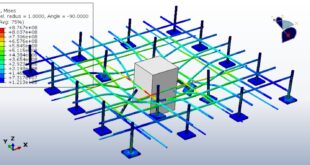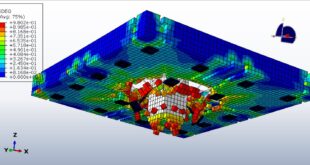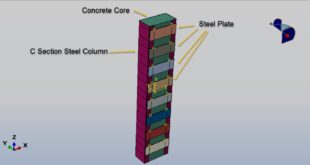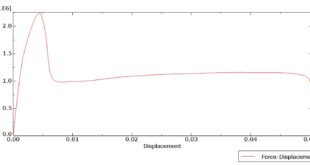In this tutorial, the Simulation of ECC/Concrete Composite Beam-Column Joints under axial loading in Abaqus has been investigated. For conventional reinforced concrete frame structures, the seismic performance mostly depends on the deformation ability of key components such as beams, columns and their joint zones. Under earthquake actions, these members are expected to maintain substantial inelastic deformations without a significant loss of load-carrying capacity. Among these structural components, beam-column joints are designed to sustain vertical live or dead loads transferred from beams and slabs, horizontal loads from earthquake actions and wind, leading to complicated stresses in the joint zone. In recent years, a class of high performance fiber reinforced cementitious composites (called engineered cementitious composites (ECC) with ultra ductility, has been developed for applications in the construction industry Substitution of conventional concrete with ECC strategically in concrete frame structures may provide a method to solve the deficiencies resulting from the brittleness of concrete. ECC and concrete have a similar range of tensile and compressive strengths while they have distinct differences in tensile deformation behavior. For conventional concrete, it fails in a brittle manner once its tensile strength is reached. However, for an ECC plate under uniaxial tension, after first cracking, tensile load capacity continues to increase with strain hardening behavior accompanied by multiple cracks along with the plate. The Column and concrete beam is modeled as one solid part. The strips and bars are modeled as three-dimensional wire parts. You can see the figures of the assembled parts below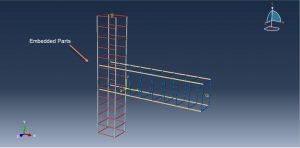
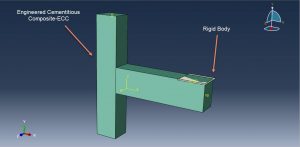
The Concrete Damaged Plasticity is used to model the concrete behavior. The data were extracted from the reference paper. The steel material with elastic-plastic behavior for strips and bars is used. The general static step is appropriate for this type of analysis. The surface to surface contact algorithm with contact property is implied between the rigid plate and the concrete beam. The bars and strips are embedded inside the concrete host. The fixed boundary condition is assumed for two ends of the concrete column and displacement with amplitude for the rigid plate. The mesh should be fine to achieve good results
After the simulation, all results such as stress, strain, force-displacement diagram, and …are obtainable. You can see some figures for the results below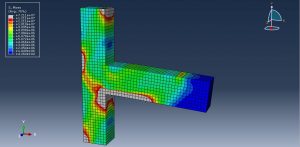
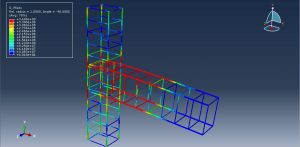
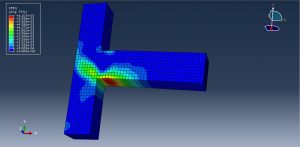
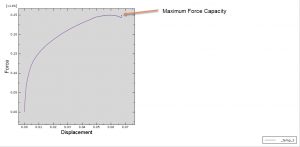
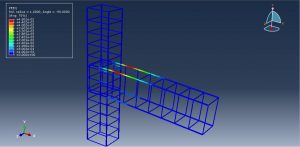
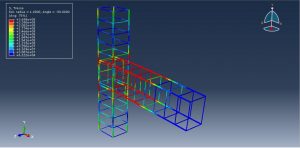
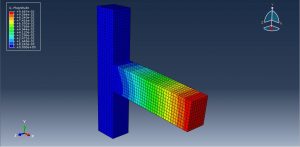
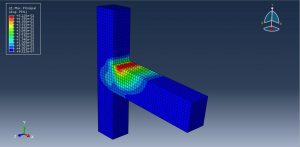
You can provide CAE ,INP,and English video files of this simulation here. The cost of these files is Twenty-Six Euros. you can click on the bellow bottom to beginning process
You can purchase the tutorial through a PayPal account, a Visa, or a Master card, just before payment,send me an email to this address: karampourp@gmail.com
 Abaqus tutorials Abaqus tutorials
Abaqus tutorials Abaqus tutorials
